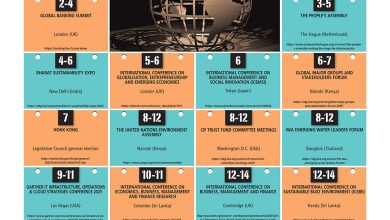 RIDE A ROBOTAXI The California Public Utilities Commission (CPUC), which has approved all day paid robotaxi services in San Francisco, is allowing unlimited fleets of self-driving cars to operate. This decision comes after applications from Cruise, backed by General Motors and Waymo, a subsidiary of Alphabet.
RIDE A ROBOTAXI The California Public Utilities Commission (CPUC), which has approved all day paid robotaxi services in San Francisco, is allowing unlimited fleets of self-driving cars to operate. This decision comes after applications from Cruise, backed by General Motors and Waymo, a subsidiary of Alphabet.
The three to one vote in favour of the expansion came about despite objections from San Francisco officials and some residents who argued that self-driving vehicles aren’t ready for prime time yet, citing concerns over safety and traffic disruption.
Cruise and Waymo argue that these concerns are infrequent, and that their autonomous vehicles are the safest way to manage unusual traffic situations. These enterprises will now be allowed to operate with Waymo and permitted to travel at up to 104 kilometres an hour, and with Cruise at up to 56 kilometres an hour.
Since the approval doesn’t set a limit on the size of their fleets, the number of robotaxis they will operate in San Francisco is uncertain.
The decision marks a significant step for Cruise and Waymo in turning their self-driving car projects into viable businesses, though concerns expressed by city representatives and other stakeholders continue to be a challenge.
BOTS SHIFT SHAPE Engineers at the University of Colorado Boulder have developed a remarkable tiny robot called ‘CLARI’ – from an acronym for Compliant Legged Articulated Robotic Insect.
Taking its inspiration from the world of insects, CLARI can change shape passively and squeeze through narrow gaps. It can fit in the palm of a human hand and weighs less than a ping-pong ball.
CLARI can also transform its shape from square to long and slender when faced with tight spaces. Its modular design makes it easy to customise and add more legs. Researchers envision building an eight-legged spider style robot in the future.
Although still in its early stages, CLARI has the potential to aid first responders in disaster scenarios by entering spaces such as collapsed buildings or the inside of jet engines, which robots cannot do. Unlike many existing robots, CLARI’s design emphasises flexibility, adaptability, and the ability to change shape and size to suit different environments.
Researchers are looking to incorporate sensors into CLARI to detect obstacles, and working on achieving the right balance of flexibility and strength as they continue to develop this shape changing robot.
The ultimate goal is to create robots that are capable of navigating complex natural spaces such as forests or rocky terrain, which were previously inaccessible to traditional robots.
TOXIC PAPER CUPS A recent study has raised concerns about the environmental impact of paper coffee cups, often considered a more sustainable choice compared to their plastic counterparts.
Despite their eco-friendly image, these paper cups are coated with a thin layer of plastic to prevent liquid from seeping into the paper.
Researchers have found that this plastic lining can release toxic substances – as revealed in a study led by Associate Professor of Environmental Science at Sweden’s University of Gothenburg Bethanie Carney Almroth.
Scientists tested the effects of both paper and plastic cups on midge larvae, commonly used in toxicity experiments. Both types of cups leached harmful substances that hindered the growth and development of the larvae. Unfortunately, the exact composition of these substances remains unknown due to a lack of transparency by cup manufacturers.
The research underscores the complexity of coffee cup materials, which often include synthetic components and various chemicals. Even when cups use plant-based materials such as polylactic acid, additional chemicals are introduced during processing. The challenge is further compounded by the fact that chemical analyses can’t always identify the precise substances present.
LEARNING MATHS Electrical noise stimulation applied to the brain could revolutionise mathematical learning, claims a study by the Universities of Surrey and Oxford, in collaboration with Loughborough University in the UK and Radboud University in the Netherlands.
The research focusses on the application of electrical noise stimulation to the frontal brain region to boost maths skills significantly in those previously struggling with the subject. However, it didn’t affect those already excelling or the placebo groups. Researchers suspect this stimulation alters sodium channels and enhances cortical excitability.
Head of Psychology at the University of Surrey Prof. Roi Cohen Kadosh says that the potential of this stimulation protocol is valuable in the process of learning. The study featured 102 participants who were divided into groups exposed to stimulation while responding to maths problems. EEG recordings tracked brain activity changes.
Research leader Dr. Nienke van Bueren from Radboud University notes that individual brain excitability plays a role and those with lower excitability benefitted more.
This discovery promises tailored learning enhancements. Fine-tuning neurostimulation could benefit individual needs and offer hope to those who are struggling with mathematics while hinting at the future of personalised learning.






